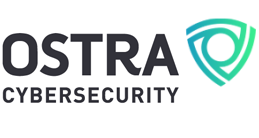Insourcing vs. Outsourcing Cybersecurity:How to Find the Best Approach for Your Practice
Outsourcing Cybersecurity: Most Companies Can’t Handle Cybersecurity On Their Own
 Cybersecurity has become an essential aspect of business operations. With the increasing complexity of cyber threats and the value of sensitive data, organizations must adopt robust strategies to protect their assets.
Cybersecurity has become an essential aspect of business operations. With the increasing complexity of cyber threats and the value of sensitive data, organizations must adopt robust strategies to protect their assets.
A recent article in Forbes titled The Evolution Of Cybersecurity And How Businesses Can Prepare For The Future states, “One thing is for sure: The biggest challenges facing the future will be keeping up with the growing sophistication of attackers.”
When implementing a cybersecurity practice, companies often face the critical decision of insourcing or outsourcing their cybersecurity efforts.
Both approaches have their merits and drawbacks, making it essential for businesses to carefully evaluate their unique needs before determining the best course.
Understanding Insourcing and Outsourcing in Cybersecurity
Before delving into the comparison, it’s important to understand what insourcing and outsourcing mean in the context of cybersecurity.
Cybersecurity Insourcing
Cybersecurity insourcing refers to handling cybersecurity internally, wherein an organization establishes its in-house team of cybersecurity professionals responsible for safeguarding the company’s assets.
Cybersecurity Outsourcing
Cybersecurity outsourcing involves partnering with external cybersecurity service providers to handle security tasks on behalf of the organization.
Hybrid Cybersecurity Approach
The hybrid approach to cybersecurity is a combination of insourcing and outsourcing, wherein an organization outsources certain tasks while keeping the remainder in-house.
The Advantages of Insourcing Cybersecurity
One of the primary advantages of insourcing cybersecurity is its level of control and customization. An in-house team allows organizations to tailor their security measures to align with their specific needs and requirements.
Additionally, in-house teams can better understand the company’s operations and culture, leading to a more effective security strategy.
Insourcing can potentially lead to cost savings in the long run. While initial setup costs might be higher, the absence of third-party fees can result in lower overall expenses over time.
With a dedicated team on-site, response times to security incidents can be faster, potentially minimizing the impact of breaches or attacks.
The Challenges of Insourcing Cybersecurity
Despite its advantages, insourcing cybersecurity also presents certain challenges. Building and maintaining an expert cybersecurity team demands significant recruitment, training, and continuous education investment.
As the threat landscape evolves rapidly, it can be challenging for in-house teams to keep up-to-date with the latest threats and security technologies.
Moreover, for smaller organizations or those with limited resources, assembling a comprehensive in-house team with diverse skill sets can be cost-prohibitive. In such cases, insourcing might result in a trade-off between the breadth of expertise and the available budget.
The Benefits of Outsourcing Cybersecurity
Cybersecurity offers several compelling benefits, making it an attractive option for many organizations. Access to specialized expertise is one of the primary advantages of outsourcing.
By partnering with a reputable cybersecurity service provider, businesses can tap into a pool of highly skilled professionals with extensive knowledge of the latest threats and security practices.
Outsourcing cybersecurity can provide around-the-clock monitoring and support, ensuring that security incidents are promptly detected and addressed, even outside regular business hours.
This constant vigilance can significantly enhance an organization’s ability to respond to threats in real-time.
The Considerations and Drawbacks of Outsourcing
While outsourcing can be beneficial, it’s not without its considerations and potential drawbacks. One critical aspect that requires careful attention is data privacy and security.
Sharing sensitive information with external parties carries inherent risks, and organizations must ensure that the chosen cybersecurity provider adheres to the strictest data protection standards.
Another potential drawback is the lack of complete control over the cybersecurity process. Relying on external providers means entrusting them with critical security responsibilities, and organizations must thoroughly vet potential partners to establish trust and ensure alignment with their security objectives.
“One thing is for sure: The biggest challenges facing the future will be keeping up with the growing sophistication of attackers.”
Evaluating Your Cybersecurity Needs
Before deciding between insourcing and outsourcing, organizations must thoroughly evaluate their cybersecurity needs. This assessment should encompass various factors, including the organization’s size, industry, budget, existing in-house expertise, and the level of security required to protect sensitive data and assets.
Consideration of the company’s growth trajectory and future expansion plans is crucial, as scalability plays a vital role in determining the sustainability of the chosen approach.
Cost Analysis: Cybersecurity Total Cost of Ownership
An accurate cost analysis is essential for making an informed decision. This analysis should consider the initial setup costs and the long-term expenses associated with each approach.
While outsourcing might have more apparent upfront fees, it could prove cost-effective when considering factors like recruitment, training, and retention of in-house cybersecurity professionals.
Organizations should calculate the Total Cost of Ownership (TCO) for insourcing and outsourcing options to understand the financial implications comprehensively.
Risk Assessment: Identifying Vulnerabilities and Threats
Conducting a risk assessment is a fundamental step in cybersecurity planning. This assessment involves identifying potential vulnerabilities and threats the organization might face and understanding how each approach addresses these risks differently.
Both insourcing and outsourcing have risk profiles, and organizations must weigh these risks against their capabilities and risk tolerance to make an appropriate decision.
Hybrid Approach: The Middle Ground
In some instances, a hybrid approach combining elements of both insourcing and outsourcing might be the best fit for an organization. A hybrid model allows companies to leverage their in-house expertise while complementing it with external resources for specific security functions.
For example, an organization might choose to maintain an in-house cybersecurity team for routine tasks and day-to-day monitoring while outsourcing incident response and penetration testing to external experts.
Real-World Examples and Case Studies
A recent client specializing in software development had been managing its cybersecurity internally for several years. However, as the company expanded its operations and the cybersecurity landscape evolved, it faced challenges maintaining a robust and up-to-date security posture.
Seeking a more efficient and comprehensive solution, the client decided to outsource its cybersecurity to Ostra Cybersecurity, a reputable external cybersecurity service provider.
The Challenge
As our client’s business grew, so did their digital footprint, making them a more appealing target for cyber threats. The company’s internal IT team needed help to keep up with the increasing complexity of cyber threats and the demands of managing security across its expanding network.
Regular updates to security software, threat monitoring, and incident response were becoming overwhelming tasks, diverting attention from the core business functions.
They also had concerns about the potential for data breaches and their impact on their reputation and customer trust. They needed a cybersecurity partner with expertise and resources to safeguard their sensitive data and intellectual property effectively.
Choosing Ostra Cybersecurity
After thorough research and evaluation of potential cybersecurity partners, our client decided to partner with Ostra Cybersecurity. Ostra’s reputation for providing comprehensive and proactive cybersecurity solutions and its focus on SMBs aligned perfectly with the client’s needs.
The decision to outsource their cybersecurity was based on several key advantages offered by Ostra:
Expertise and Specialization: Ostra Cybersecurity boasts a team of highly skilled cybersecurity professionals who specialize in various aspects of security, including threat detection, incident response, and compliance. This expertise allowed the client to leverage cutting-edge security practices without needing continuous internal training and skill development.
24/7 Monitoring and Support: Ostra’s round-the-clock monitoring and support services provide the client peace of mind. The continuous monitoring allowed for real-time threat detection and immediate response to potential security incidents, reducing the risk of extended breaches and minimizing potential damage.
Advanced Threat Detection Technology: Ostra Cybersecurity utilized advanced threat detection technology, including AI-powered tools and machine learning algorithms. This technology enabled early identification of emerging threats and potential vulnerabilities, ensuring proactive mitigation before they could pose a significant risk.
Enhanced Data Protection: Data security was a top concern for the client, and Ostra Cybersecurity addressed this by implementing robust data protection measures. Encryption, access controls, and secure data storage practices were employed to safeguard sensitive information from unauthorized access or data breaches.
Regular Security Updates and Patch Management: Ostra Cybersecurity assumed responsibility for managing security updates and patches across the client’s systems. This helped to keep their infrastructure updated with the latest security patches, reducing the risk of exploitation through known vulnerabilities.
Scalability and Flexibility: As the client grew, they needed a cybersecurity solution that could scale with their evolving needs. Ostra’s flexible service offerings allowed for seamless adjustments to accommodate changes in their network size and security requirements.
The Results and Benefits
By outsourcing their cybersecurity to Ostra Cybersecurity, our client experienced several significant benefits:
Enhanced Security Posture: With Ostra’s expertise and proactive approach to security, they saw a marked improvement in their overall security posture. The timely identification and mitigation of potential threats reduced the likelihood of successful cyber attacks.
Cost Efficiency: The cost of outsourcing their cybersecurity proved to be more cost-effective than maintaining an in-house cybersecurity team. The client optimized their cybersecurity budget by eliminating the need for continuous training and expensive security tools.
Increased Focus on Core Business: With Ostra managing its cybersecurity, our client’s internal IT team could redirect their efforts towards improving software development and other critical business functions.
Compliance Adherence: Ostra’s expertise in compliance requirements ensured that the client remained compliant with industry regulations and data protection laws, mitigating the risk of legal and financial consequences.
By partnering with Ostra Cybersecurity, the client successfully transitioned from internal cybersecurity management to an outsourced, proactive approach.
Ostra’s expertise, advanced technology, and 24/7 monitoring bolstered XYZ Technologies’ security posture, allowing them to focus on their core business operations without compromising data protection.
The decision to outsource their cybersecurity proved to be a strategic move that fortified our client’s resilience against cyber threats in an ever-evolving digital landscape.
What’s Best For You?
Choosing between insourcing and outsourcing for your cybersecurity practice is a mission-critical decision that requires a comprehensive evaluation of your organization’s unique needs, risk tolerance, and available resources.
Each approach has advantages and drawbacks, and there is no one-size-fits-all solution. By carefully considering the factors outlined in this blog, your organization can make a well-informed decision that enhances your cybersecurity posture and protects your valuable assets in an ever-evolving digital landscape.
Discover the benefits of outsourcing cybersecurity in business operations. Make an informed decision for your practice. Protect assets effectively.
A trusted cybersecurity partner can provide much-needed relief as well as lend cutting-edge expertise to your stretched IT operations team. Explore your options by scheduling your free security assessment with Ostra today.
FAQs:
Q: What is the difference between insourcing and outsourcing cybersecurity?
A: Insourcing involves handling cybersecurity internally, with an in-house team responsible for security. Outsourcing, on the other hand, entails partnering with external cybersecurity service providers to handle security tasks.
Q: What benefits does outsourcing cybersecurity provide?
A: Outsourcing provides access to specialized expertise, around-the-clock monitoring and support, and the ability to tap into a pool of skilled professionals. This can enhance an organization’s ability to respond to threats promptly.
Q: What considerations should organizations make when evaluating insourcing vs outsourcing cybersecurity?
A: Organizations should evaluate factors like their size, industry, budget, existing expertise, and security needs. They should also assess their growth trajectory and scalability requirements.
Q: What is a hybrid approach to cybersecurity, and when might it be beneficial?
A: A hybrid approach combines both in-house and outsourced cybersecurity elements. It can be beneficial when an organization wants to leverage its in-house expertise while supplementing it with external resources for specific security functions.
Q: What should organizations consider when deciding between insourcing and outsourcing cybersecurity?
A: Organizations should weigh factors like control, customization, expertise, cost, data privacy, and risk tolerance. An accurate Total Cost of Ownership (TCO) analysis is essential, as well as a thorough risk assessment.
As Your Trusted Cybersecurity Team, Ostra makes cybersecurity simple and accessible to businesses of all sizes. Ostra provides its partners and their clients with a multi-layered, comprehensive and fully managed Security as a Service.




